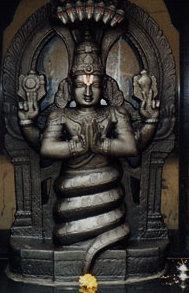“Yoga Sutras Made Simple: Dive into the Mystical World of Yoga Sutras!”
हिरण्यगर्भः योगस्य प्रोक्ता, नान्यः पुरातनः
“Hiranya GarbhaH, Yogasya prokta, Na anya puratanah”
Yoga is the product of Brahma, the Creator, who was born from Visnu’s navel, and no one else.
“Hiranyagarbha is the initial knower of Yoga. Since Brahma himself descended from Visnu, Visnu was the first teacher of Yoga. Nobody is older than this. The same tradition was continued by Sage Patanjali, who left us the profound “YOGA SUTRAS” masterpiece.
“In the realm of yoga and spiritual enlightenment, the Yoga Sutras stand as an ancient and profound guide, offering seekers a path to self-realization and inner peace. This ancient text, attributed to the sage Patanjali, contains a treasure trove of wisdom that has resonated with countless souls throughout the centuries. In this comprehensive exploration, we delve deep into the mystical world of the Yoga Sutras, unraveling their significance and offering insights that transcend time and space.
Understanding the Origins
The Yoga Sutras, often referred to as the “Threads of Yoga,” are believed to have been composed by Patanjali around the 2nd century CE. These concise aphorisms, written in Sanskrit, encapsulate the essence of yogic philosophy and practice. Patanjali’s intention was to provide a roadmap for individuals seeking to transcend the limitations of the human experience and attain a state of union with the divine.
The Structure of the Yoga Sutras
The Yoga Sutras are divided into four chapters or books, known as “padas,” each serving a distinct purpose:
1. Samadhi Pada: The Portals to Enlightenment
 Samadhi Pada, the first chapter, lays the foundation for the entire text. It introduces the concept of yoga and the various states of consciousness that one can attain through dedicated practice. Patanjali outlines the obstacles on this path and provides guidance on overcoming them.
Samadhi Pada, the first chapter, lays the foundation for the entire text. It introduces the concept of yoga and the various states of consciousness that one can attain through dedicated practice. Patanjali outlines the obstacles on this path and provides guidance on overcoming them.
2. Sadhana Pada: The Practice of Yoga
In the second chapter, Sadhana Pada delves into the practical aspects of yoga. It outlines the eight limbs of yoga, known as Ashtanga Yoga, which include ethical principles (Yamas and Niyamas),physical postures (Asanas), breath control (Pranayama), and meditation (Dhyana).
3. Vibhuti Pada: The Powers and Achievements
Vibhuti Pada, the third chapter, explores the supernatural powers and achievements that can be unlocked through yogic practice. It emphasizes the importance of self-discipline and warns against getting entangled in these extraordinary abilities, as they can be distractions on the path to liberation.
4. Kaivalya Pada: Liberation and Ultimate Freedom
Kaivalya Pada, the final chapter, leads us to the ultimate goal of yoga: liberation, or “kaivalya. It describes the state of pure consciousness, where the individual soul realizes its oneness with the universal consciousness.  This chapter elucidates the profound nature of enlightenment and the freedom it bestows on the seeker.
This chapter elucidates the profound nature of enlightenment and the freedom it bestows on the seeker.
The Essence of the Yoga Sutras
At their core, the Yoga Sutras provide a roadmap for inner transformation. They teach us to transcend the fluctuations of the mind, overcome suffering, and discover the eternal truth that resides within us. Here are some key takeaways from this ancient text:
Self-Realization
The Yoga Sutras guide individuals towards self-realization. They encourage introspection and self-discovery, leading to a deeper understanding of one’s true nature.
Mind Control
Patanjali emphasizes the importance of controlling the mind. Through practices like meditation and pranayama, individuals can achieve mastery over their thoughts and emotions.
Ethical Living
The Yamas and Niyamas, outlined in Sadhana Pada, provide a moral and ethical framework for yogic living. They include principles such as truthfulness, non-violence, contentment, and self-discipline.
Union with the Divine
Ultimately, the Yoga Sutras offer a path to union with the divine. They teach us that the individual soul (Atman) can merge with the universal consciousness (Brahman), leading to liberation from the cycle of birth and death.
Modern Relevance
In today’s fast-paced world, the teachings of the Yoga Sutras hold immense relevance. They offer solace to those seeking inner peace and a respite from the chaos of daily life. Yoga, inspired by the Sutras, has gained widespread popularity for its physical and mental health benefits.
Conclusion
In the vast landscape of yogic philosophy, the Yoga Sutras shine as a guiding light, illuminating the path to self-realization and spiritual awakening. Their timeless wisdom transcends cultures, languages, and eras, offering profound insights into the human experience. As we continue our journey through life, may the Yoga Sutras serve as a beacon, leading us toward the ultimate destination—the union of the individual soul with the cosmic consciousness.
